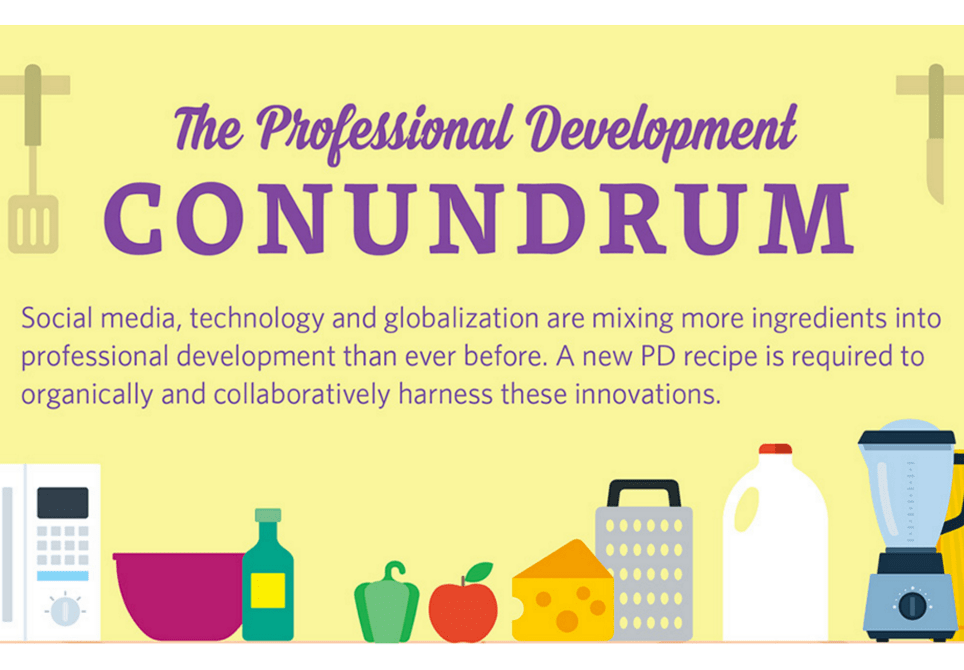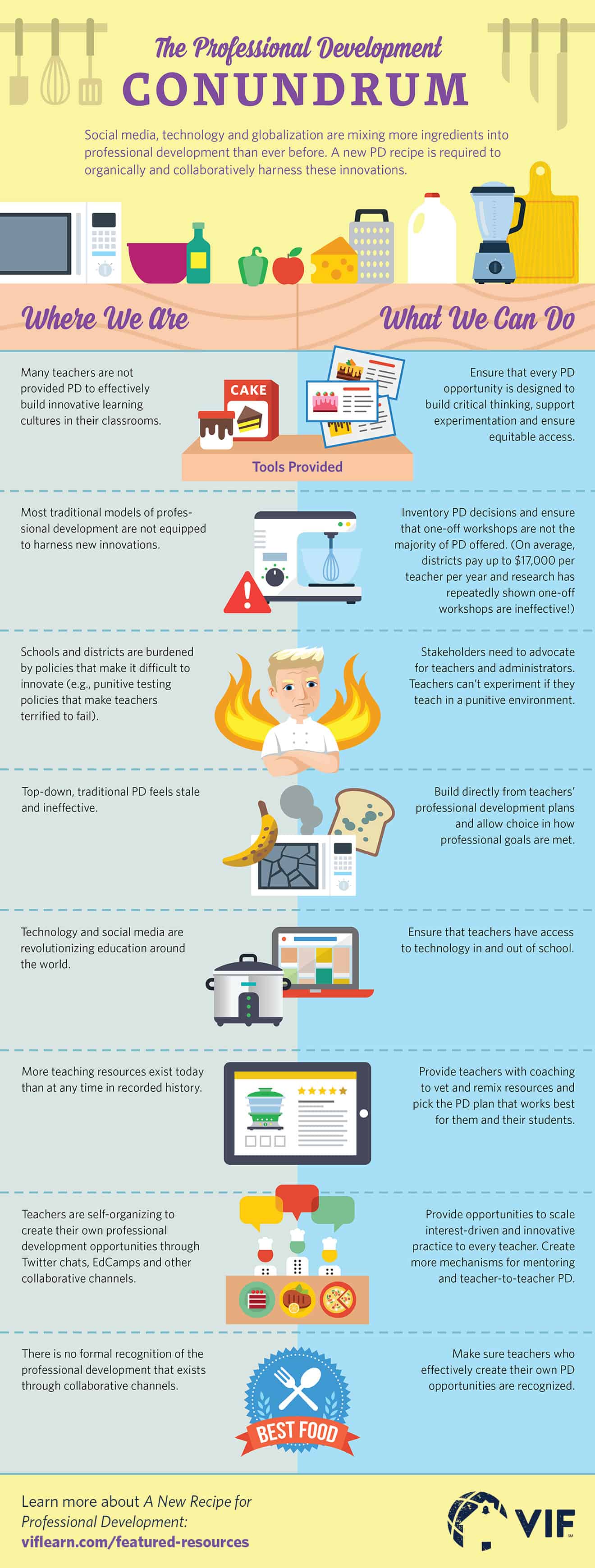8 New Ingredients for Innovative Professional Development

Julie Keane, Director of Research and Evaluation, VIF International Education
Jim Kennedy, Marketing Designer, VIF International Education
We have already looked at a New Model for Professional Development, but now the question is, why do we need one?
For the past 15 years, two diametrically opposing forces have been the source of both opportunities and challenges for teachers. While educational technologies exist that provide innovative tools for teachers and students to create, investigate and connect to people and resources around the globe, education policies and politics prevent teachers from fully exploring these technologies in their classrooms and instructional practices. The same barriers that Larry Cuban identified in Oversold and Underused in 2003 are still a reality for many educators and schools.
Teachers navigate contradictory landscapes of policy and practice that can pull them in different directions. This can result in undermining their own engagement, their ability to innovate and, ultimately, their ability to focus on what they know their students need.
Teachers have to balance the enthusiasm they feel when they develop their own personal learning networks (PLNs) with the difficulty of enacting a pedagogy and curriculum that is ineffective for many learners and does not align with the frameworks promoted by organizations such as Partnership for 21st Century Learning.
That’s what we like to call the Professional Development Conundrum. But instead of telling you, we thought it would be better to show you.

This post is part of a blog series titled “Professional Development: Learning Through Collaboration” produced in partnership with VIF International Education (@vifglobaled). Join the conversation on Twitter using #collaborativePD. For more, check out Professional Development: Learning Through Collaboration, and see:
Stay in-the-know with all things EdTech and innovations in learning by signing up to receive the weekly Smart Update. This post includes mentions of a Getting Smart partner. For a full list of partners, affiliate organizations and all other disclosures please see our Partner page.






andres
nice job
Ari Yares
One of the challenges that all school staff face with professional development is seeing whether or not it is relevant and meaningful to them. Administrators are often focused on the big picture and forget how it connects to the daily lives of staff. Teachers often feel more engaged by professional development that they can see having an impact in their daily lives. I often think about what the takeaways will be when planning. Then, you need to think about how to follow up on those things.
Tony
Something happens to teaching and learning practices during professional development. Too often professional developers and presenters teach educators using exactly the methods we are taught not to use.
John Terry
A very succinct and yet comprehensive critique of PD and what could be possible! Thank you.
Kathy Emeigh
Well said! The graphic is excellent! Thank you- I'm passing this along.